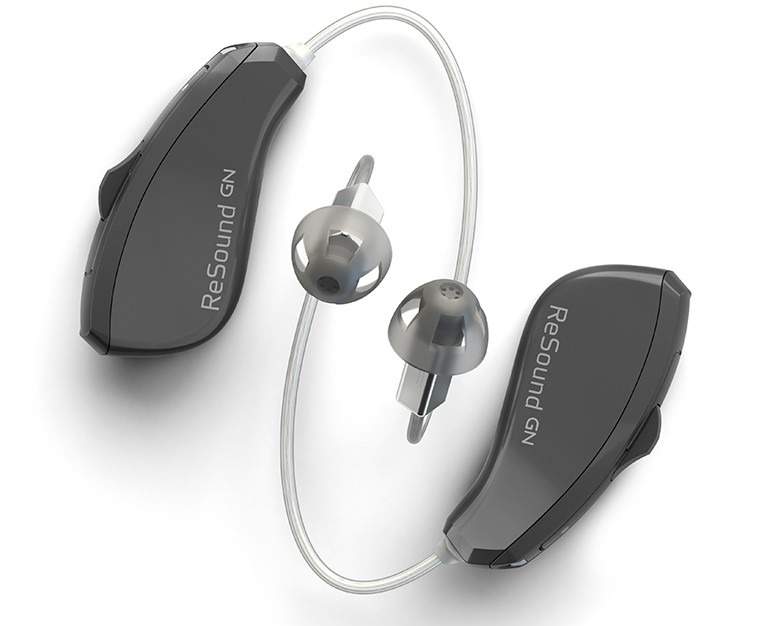National paracycling champion Tom Staniford, just one of eight people worlwide who've been diagnosed with mandibular dysplasia, discusses how ReSound LiNX Quattro hearing aids have brought new confidence and improved performance to many aspects of his life

Tom Staniford was the British national paracycling circuit race champion recommends hearing aids to be more personalised for its users through more variety of colours (Credit: Pixabay)
The 2011 National Para-Cycling Circuit Race Champion Tom Staniford, who was diagnosed with the extremely rare metabolic disorder mandibular dysplasia with deafness and progeroid features, shares how his severe hearing loss led to the GN ReSound LiNX Quattro hearing aid becoming a fundamental device behind his entire life – covering everything from training to relationships and work.
Currently a director at a digital marketing agency Staniford Associates, Tom Staniford persevered through multiple tests and treatments until six years ago he was identified as one of eight people in the world with a metabolic disorder that prevents fatty tissue from being stored underneath the skin.
Despite having suffered from numerous symptoms caused by an ailment he was unaware of for so many years and being at high risk of breaking bones if he fell from his bike, Staniford went on to become one of Britain’s leading paracyclists.
Tom’s hearing also deteriorated to a considerable extent when he was a child, which is why he must now wear hearing aids. However, it wasn’t until he was fitted with the ReSound LiNX Quattro, that he found a device that enabled him to find a whole new level of self-confidence.
Speaking to NS Medical Devices, he said: “The mandibular dysplasia with deafness and progeroid features diagnosis came in 2013, after I’d done most of my racing.
“I have had all of the symptoms since puberty, but doctors just didn’t know the underlying cause for that particular combination of issues.
“That was in a way better because without knowing the cause we didn’t fixate unnecessarily on cures and labels and focused, instead, on practical solutions and treatments that helped the immediate symptoms.
“On the devices front, I cannot do without my ReSound LiNX Quattro hearing aids.
“My hearing loss is so severe now that I hear literally nothing without them. So they are absolutely fundamental to my entire life like personal relationships, work, enjoying music and TV, and everything.”

What is mandibular dysplasia?
Also known as MDP Syndrome, the condition is an extremely rare metabolic disorder discovered in 2013, which prevents fatty tissue from being stored beneath the skin that’s triggered by a single gene mutation.
Although born a normal weight, he lost all the fat around his face and limbs during his childhood. Despite this, his body’s belief that he is obese triggered the unwanted side-effect of type 2 diabetes.
However, Staniford refused to let such issues impact his daily life, instead developing a routine that enabled him to control his diabetes, remain healthy and train on his bike.
To help remain ambitious and determined to continue training at such high intensities, Staniford says he does lots of reading, lots of personal testing and “remains as objective as possible”.
He adds: “Physiology and training manuals and expert coaches are an essential resource, but there also comes a time post-basics when the information in the textbook starts to deviate from my reality.
“The more we’ve learned about MDP, and my personal physiology, the more we’ve seen how I am subtly different from the ‘textbook’ human and that process is still very much ongoing. The more we learn, the more new questions we have.”
Professor Andrew Hattersley, a Wellcome Trust Senior Investigator at the University of Exeter Medical School, has been working with the cycling champ for several years, to help manage and understand his condition.
He led an international team of researchers in a study of four unrelated patients in the UK, the USA and India, all with the same symptoms.
By sequencing and comparing the entire genomes of the patients and their families, Professor Hattersley and his colleagues were able to pinpoint the exact mutation responsible.
Titled An in-frame deletion at the polymerase active site of POLD1 causes a multisystem disorder with lipodystrophy, the study was published in the scientific journal Nature Genetics.
Winning the National Championships in 2011, remains the most memorable moment for Staniford — closely followed by the Bizkaiko Bira [Tour of the Basque Country] which he raced with the Great Britain team in 2010.
It was his first taste of international elite racing on closed roads and said it fulfilled every single expectation he’d ever had about pro-racing.

How the ReSound LiNX Quattro hearing aids helps Tom Staniford train at high intensities
GN Hearing is the Danish manufacturer behind the ReSound LiNX Quattro hearing aid, which uses advanced technology to improve sound that is described as delivering “the best sound quality and speech intelligibility available on the market” by the firm’s own marketing.
In addition to his hearing disability, Mr Staniford must take extra measures to protect himself from the cold, monitor his diet and take medication to help control his blood sugar levels.
He began wearing hearing aids from the age of 15, with the NHS prescribing him a variety of devices including Siemens, Phonak and Danavox.
“They were analogue, bulky and beige. I’m pleased to say that over time they have got smaller, more powerful, with better quality sound, and also less beige,” he adds.
Since 2013, the 30-year-old has been using ReSound exclusively — trying out the LiNX, LiNX2, LiNX 3D, and now LiNX Quattro.
He said: “You could say that I have a fairly extensive hands-on grasp of the progression of the technology.
“I made the decision to try ReSound hearing aids privately in 2013 and, whilst the NHS aids I had at the time were very good, the ReSound ones were just so much better as they were smaller, lighter, with ‘dome’ receivers rather than the older ear mold styling.”
He tells how the ReSound LiNX Quattro is especially useful during cycling and training to help listen out for traffic. It also helps when he’s on the turbo trainer at home — listening to music to “stave off the boredom”.
He added: “I also use an SRM power meter for measuring my cycling wattage, in conjunction with a Wahoo Fitness Element Bolt cycle computer, and a good old-fashioned blood glucose meter for diabetes.
“The sound quality was also a level above, and the iPhone streaming was a surprising and very welcome technological advancement.”
Prior to getting ReSound LiNX, Staniford told how he always tried to avoid phone calls. He said: “It was tiring and frustrating for me and the person on the other end of the line, and often an email would’ve been much faster and more accurate.
“But ReSound LiNX meant for the first time in my life I could actually use a phone. I wouldn’t say that I ‘enjoyed’ phones, but I no longer shied away from them, or experienced undue stress or disadvantage using one.
“As a consultant whose clients naturally prefer the speed and ease of a quick telephone call, this is a huge thing.”
How can hearing aids be more distinctive?

The ReSound LiNX Quattro’s hearing aid connects with an app, ReSound Smart 3D, that features a wide range of white noise and nature sounds to play in the background for relief from tinnitus — this can be controlled separately from the hearing aid.
The rechargeable technology relies on a new processor, which ensures quiet inputs are heard accurately, while louder sounds render without distortion.
It’s the first smart hearing aid to use AI, a functionality that allows it to pair with Apple’s Siri to take advantage of new Layers of Sound technology and cloud-based features that allow for remote device fine-tuning.
It’s a field in medical devices and healthcare that is currently very popular, for future developments of hearing aids to become more distinctive, personalised and accessible, Staniford suggests wearers be given more choices of colours with custom designs.
He said: “Look at glasses. Yes, they’re infinitely cheaper and less complex than hearing devices, but look at the sheer range of styles and colours available.
“Part of the reason sight loss is less of a stigma than in years past is because of the sheer hum-drum familiarity of seeing people wearing them, and the fact they have become part of expressing your personal identity.
“We need to stop hiding hearing loss away like it’s a shameful or uncommon issue, and part of the solution might be offering people more options for making their hearing aids part of their unique identity and lifestyle.”
